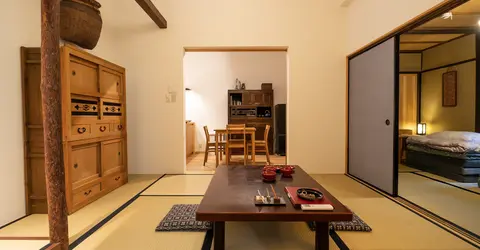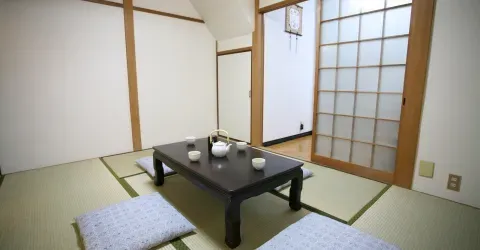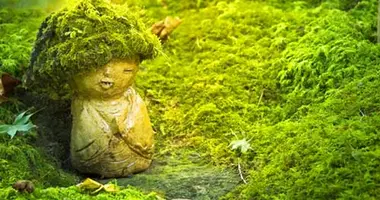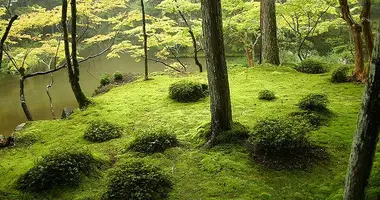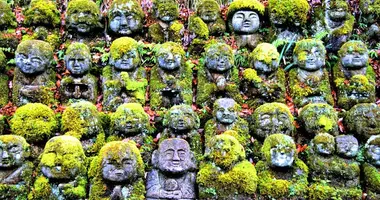Okazaki Shrine: A haven for fertility and cute rabbit statues in Kyoto

Rabbit motif lantern at Okazaki Shrine, Kyoto
Nestled in the heart of Kyoto, Okazaki Shrine stands as a unique testament to Japan's rich spiritual heritage. This Shinto shrine, known for its abundance of adorable rabbit statues, has become a popular destination for those seeking blessings for fertility and safe childbirth. With its long history dating back to the Heian Period, Okazaki Shrine offers visitors a blend of traditional Japanese spirituality and kawaii culture. As you step through the torii gate, you'll be transported into a world where ancient beliefs meet modern-day hopes, all under the watchful eyes of countless bunny figurines. Whether you're a history buff, a spiritual seeker, or simply in search of Kyoto's hidden gems, Okazaki Shrine promises a memorable experience that captures the essence of Japan's multifaceted culture.
Historical significance and origins of Okazaki Shrine
Okazaki Shrine, also known as Higashi-tenno (東天王岡崎神社), boasts a rich history dating back to the early Heian Period (794-1185). Originally established in 794 by Emperor Kanmu, it was one of the four shrines built to protect the newly established capital of Heian-kyo (present-day Kyoto) from malevolent forces. The shrine's primary purpose was to guard the eastern direction of the Imperial Palace, hence its original name, Higashi-tenno, meaning "Eastern King."
As centuries passed, Okazaki Shrine's role evolved. A pivotal moment in its history came in 1178 when the shrine received imperial favor following the successful birth of an empress. This event marked the beginning of the shrine's association with childbirth and fertility, a connection that remains strong to this day. The shrine is dedicated to the mythical kami Susano-no-mikoto and Kushinadahime-no-mikoto, known for their numerous offspring – three daughters and five sons.
Today, Okazaki Shrine stands as a testament to Kyoto's enduring spiritual heritage, blending its ancient protective role with its more recent focus on fertility and safe childbirth. Its location in the Okazaki museum district, near the famous Heian Jingu, makes it an integral part of Kyoto's cultural landscape.
The symbolism of rabbits at Okazaki Shrine
Rabbits play a central role in the iconography and symbolism of Okazaki Shrine, earning it the nickname "Usagi-jinja" or "Rabbit Shrine." This association stems from several factors that make rabbits the perfect symbol for this sacred place:
1. Fertility and reproduction: Rabbits are well-known for their prolific breeding habits, making them an ideal symbol for a shrine dedicated to fertility and safe childbirth.
2. Eastern direction: In Chinese astrology, which has influenced Japanese culture, the rabbit is associated with the eastern direction. This aligns perfectly with the shrine's original purpose as the guardian of the east.
3. Local wildlife: Historically, rabbits were a common sight in the Okazaki area, further strengthening the connection between the shrine and these animals.
4. Divine messengers: At Okazaki Shrine, rabbits are believed to be the divine messengers of the enshrined kami, Susano-no-mikoto and Kushinadahime-no-mikoto.
This multifaceted symbolism has led to the proliferation of rabbit imagery throughout the shrine grounds, creating a unique and charming atmosphere that sets Okazaki Shrine apart from other Japanese temples and shrines.

Honden (Main Hall), Okazaki Shrine, Kyoto
Notable rabbit statues and their meanings
Okazaki Shrine is home to a variety of rabbit statues, each with its own significance and charm. Here are some of the most notable ones:
1. Koma Usagi: At the entrance of the shrine, visitors are greeted by two rabbit statues known as Koma Usagi. These statues, with one having an open mouth and the other closed, represent male and female energies. Touching their heads is said to bring good luck in marriage.
2. Maneki Usagi: Similar to the popular Maneki Neko (beckoning cat), the shrine features stone statues of Maneki Usagi, or beckoning rabbits. These are believed to bring happiness and good fortune to visitors.
3. Usagi Dorei: Around the main pavilion, you'll find small ceramic rabbit figurines called Usagi Dorei. These charming statues often contain small bells and are considered to bring good luck.
4. Kosazuke Usagi: Perhaps the most famous rabbit statue at Okazaki Shrine is the Kosazuke Usagi, or fertility rabbit. This black granite statue sits near the chozuya (purification fountain). Visitors hoping for an easy childbirth often sprinkle water on the statue and rub its belly.
These various rabbit statues not only add to the shrine's unique aesthetic but also serve as focal points for visitors' prayers and wishes, particularly those related to fertility, safe childbirth, and marital happiness.

Black rabbit figure, Okazaki Shrine, Kyoto
Spiritual practices and offerings for fertility and safe childbirth
Okazaki Shrine has become a popular destination for those seeking blessings for fertility and safe childbirth. The shrine offers several spiritual practices and offerings for visitors:
1. Ema votive plaques: Visitors can purchase ema votive plaques decorated with rabbit motifs. They write their wishes on these plaques and hang them at the dedicated area near the chozuya.
2. Omamori amulets: The shrine sells various omamori (protective charms) specifically designed for fertility, conception, safe pregnancy, and healthy children.
3. Ritual with Kosazuke Usagi: Many visitors perform a ritual with the black granite rabbit statue, sprinkling it with water and rubbing its belly while praying for an easy childbirth.
4. Prayer at the main hall: Visitors can offer prayers at the main hall, asking for blessings from the enshrined kami.
5. Wedding ceremonies: Okazaki Shrine is also a popular venue for traditional Shinto weddings. Many couples choose to marry here, believing it will lead to a blessed union and a healthy family.
These practices reflect the shrine's evolution from a protective guardian of the capital to a spiritual haven for those seeking blessings in fertility and family matters.

Ema votive plaques, Okazaki Shrine, Kyoto
Architectural features and layout of the shrine
Okazaki Shrine's architecture and layout reflect its long history and spiritual significance. Here are some key features:
1. Torii gate: The shrine's entrance is marked by a traditional torii gate, signifying the transition from the mundane to the sacred space.
2. Main Hall (Honden): The central structure of the shrine is the Honden, where the kami are enshrined. Its architecture follows traditional Shinto style, with a raised floor and a gabled roof.
3. Offering Hall (Haiden): In front of the Honden is the Haiden, where visitors can offer prayers and make offerings.
4. Chozuya: Near the entrance, you'll find the chozuya, a purification fountain where visitors cleanse their hands and mouth before approaching the main hall.
5. Ema display area: There's a dedicated space for hanging ema votive plaques, usually near the chozuya.
6. Garden: The shrine grounds include a small garden area, adding to the peaceful atmosphere.
7. Rabbit statues: Various rabbit statues are strategically placed throughout the shrine grounds, each with its own significance.
The layout of Okazaki Shrine is designed to create a serene and spiritual environment, allowing visitors to easily navigate the sacred space and participate in various rituals and offerings.

Okazaki Shrine entrance torii gate, Kyoto
Visiting Okazaki Shrine: What to expect and how to get there
When visiting Okazaki Shrine, here's what you can expect and how to plan your trip:
What to expect:
- A peaceful atmosphere with fewer crowds compared to more famous Kyoto shrines
- Numerous rabbit statues and motifs throughout the grounds
- Opportunities to purchase omamori and ema related to fertility and safe childbirth
- A unique blend of traditional Shinto elements and kawaii culture
- Possible Shinto wedding ceremonies, especially on auspicious days
- Address: 51 Okazaki-higashi-tenno-cho, Sakyo-ku, Kyoto 606-8332
- Hours: 9 am - 5 pm daily
- Admission: Free
How to get there:
- By subway: Take the Tozai subway line to Higashiyama Station. The shrine is about a 15-minute walk north.
- By bus: Take Kyoto city bus #32, #93, #100, #203, or #204 to the Okazakijinja-mae stop.
- On foot: The shrine is within walking distance of popular sites like Heian Jingu and the Higashi Honganji Temple.
Remember to be respectful of the shrine's spiritual significance and follow proper etiquette when visiting. The unique charm of Okazaki Shrine makes it a worthwhile addition to any Kyoto itinerary, especially for those interested in Japan's spiritual traditions or those seeking blessings for fertility and family matters.

Stone rabbit statue, Okazaki Shrine, Kyoto
Nearby attractions and points of interest in Okazaki district
The Okazaki district, where Okazaki Shrine is located, is rich in cultural and historical attractions. Here are some nearby points of interest to consider when planning your visit:
1. Heian Jingu: This grand Shinto shrine, dedicated to the first and last emperors of Kyoto, is just a short walk from Okazaki Shrine. Its spacious grounds and beautiful gardens are particularly stunning during cherry blossom season.
2. Okazaki museum district: This area is home to several notable museums, including the Kyoto Municipal Museum of Art and the National Museum of Modern Art, offering a rich cultural experience.
3. Kyoto Handicraft Center: Located to the west of Okazaki Shrine, this center is an excellent place to purchase traditional Kyoto crafts and souvenirs.
4. Kumano Shrine: Another historical shrine in the area, known for its connection to the Kumano Kodo pilgrimage routes.
5. Kurodani Temple: This Buddhist temple to the north of Okazaki Shrine offers beautiful views of Kyoto and is known for its autumn colors.
6. Nanzenji Temple: One of Kyoto's most important Zen temples, featuring impressive gardens and architecture.
7. Philosopher's Walk: This picturesque canal-side path, lined with cherry trees, is within walking distance and offers a peaceful stroll.
The Okazaki district provides a perfect blend of spiritual, cultural, and natural attractions. Visitors can easily spend a full day exploring this area, immersing themselves in Kyoto's rich heritage. Remember to check opening hours and admission fees for these attractions, as they may vary. For those interested in delving deeper into Japanese culture, consider picking up some Books on Japanese Culture to enhance your understanding of the sites you're visiting.
